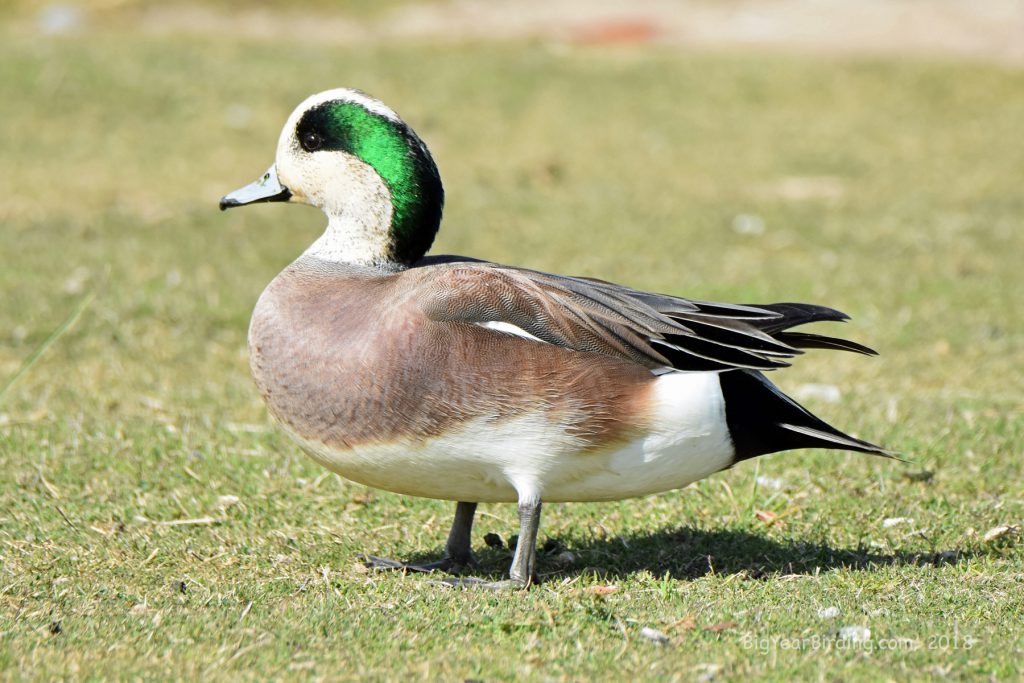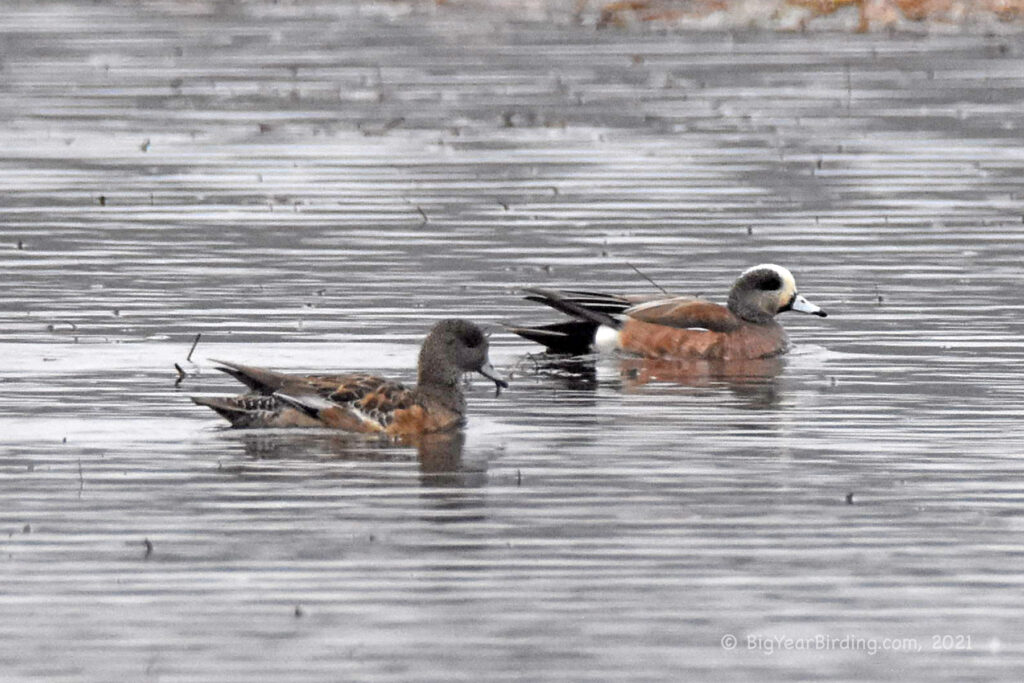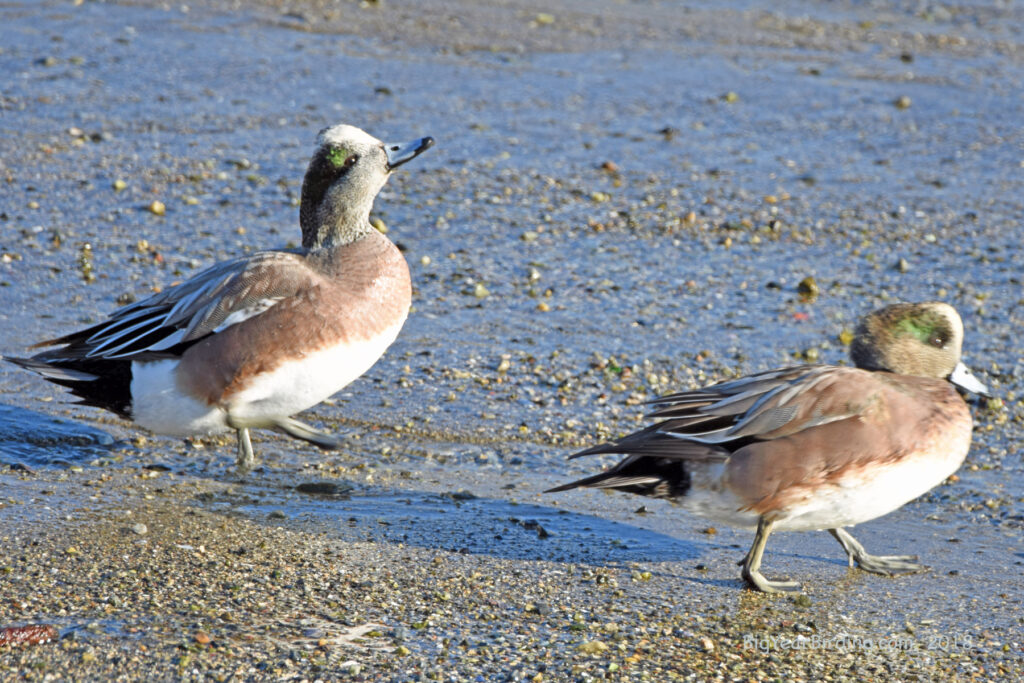
The American Wigeon (Mareca americana) is a medium-sized dabbling duck that breeds in the northern regions of North America. These ducks measure about 18 inches (45 cm) in length and weigh between 1.5 and 2 pounds (0.7 to 0.9 kg). American Wigeons have a distinctive appearance, with a white forehead and crown, a green band around the back of the head, and a dark patch running from the eye to the back of the head. They have a grayish-blue bill and a chestnut-colored breast.

During the breeding season, American Wigeons can be found in freshwater marshes, ponds, and lakes across Alaska, northern Canada, and the western United States. However, in winter, they migrate to southern North America, Central America, and northern South America. They also migrate along the Pacific and Atlantic coasts and can be seen in estuaries, bays, and salt marshes.
In flight, American Wigeons are easily identified by their wings’ distinctive pattern. They have a white patch on the wing that is visible when they are in flight. Additionally, male American Wigeons have a striking breeding plumage, with a green head, white forehead, and reddish-brown breast. Female American Wigeons have a brownish-gray head and a mottled brown body.
American Wigeons are omnivores, and their diet consists of aquatic plants, seeds, insects, and crustaceans. They often feed by tipping up in shallow water or by dabbling on the surface. During the breeding season, American Wigeons build nests on the ground in dense vegetation near water. The female lays between 7 and 13 eggs, which hatch after 25 to 28 days of incubation.

Overall, the American Wigeon is a beautiful and unique duck species that can be found across North America. Their distinctive markings, migration patterns, and feeding habits make them an interesting subject for bird watchers and nature enthusiasts alike.

